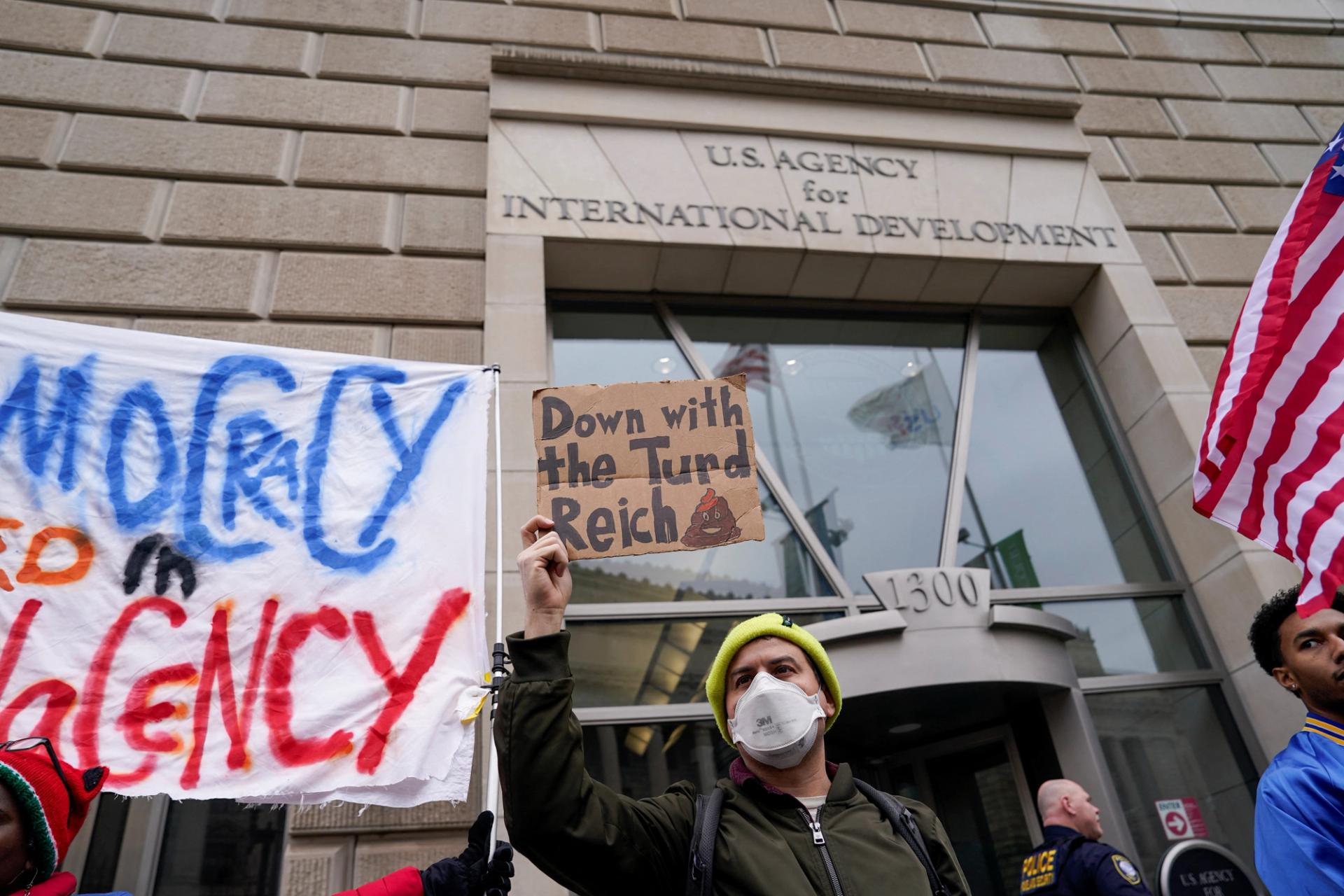Unprecedented Recklessness: Trump Strips Biden’s Security Clearance
Former President Donald Trump wasted no time in exercising his power, overturning a number of actions made by his predecessor Joe Biden. Among the most prominent of these was the immediate stripping of Biden’s security clearance. Trump was swift to declare this on his Truth Social network, leaving no room for ambiguity. ‘Joe Biden no longer requires access to classified information,’ he boldly announced, wiping away the traditional courtesy extended to ex-presidents.
A clear symbolism projected by Trump, through his actions, was his single-minded determination to dismantle the United States Agency for International Development (USAID). Considerably underappreciated, USAID sees its mission as extending America’s soft power across the globe, reaching out to the most impoverished corners. Trump, however, appeared to view it as an unnecessary drain on American resources.
Surprising as these measures were, they did not shock as much as Trump’s move to freeze aid to South Africa. With the bluntness characteristic of him, he declared his intent without equivocation. This unanticipated move, unnervingly, was perhaps part of a larger strategy to withdraw the United States from its role as a global benefactor.
Trump’s public tirade on Truth Social further raised questions about his underlying motives. There seemed to be a relentless drive to downsize, if not entirely deconstruct vast sections of the US government. One of the many implications of this move was the recalling of thousands of overseas-based staff members to the United States.
In the days following his declaration, the Trump administration made a dramatic move against USAID by reducing its staff strength of approximately 10,000 to a mere 300. The sudden reduction provoked debates concerning its legality, with labor unions mounting challenges at every turn.
Meanwhile, President Trump faced mild resistance on Friday. A federal judge subsequently paused the administration’s plan to put 2,200 USAID workers on paid leave by the end of the week. However, this seemed more like a speed bump than a concrete roadblock on his path to restructure the bureaucracy.
Accusations arose from Democrats, who questioned Trump’s constitutional authority to dissolve government agencies without legislative permission. Almost as an affront to the outcry, the United States’ current budget allocated a smaller fraction than ever before to international assistance—nearing a mere $70 billion compared to an overall extravagant expenditure.
Among the apparent casualties of this budget slashing measure was USAID, which was responsible for running health and emergency programs in about 120 countries. By curtailing these efforts, the United States seemingly turned its back against its traditional battle for influence against global rivals such as China.
Trump also opted to appoint himself the chairman of the prestigious Kennedy Center on the very same Friday, further stoking the bewildered public’s concern. His seemingly relentless campaign to reform existing policies appeared to have no boundaries or sense of propriety and moved ahead unchecked.
Trump’s move to freeze US aid to South Africa was another right out contentious decision. He referenced a controversial law in the country that supposedly allows for the confiscation of farmland from white farmers, without giving further details or evidence to support his stance.
While Democrats struggled to formulate a formidable defense against Trump’s budget-cutting initiatives, legal challenges slowly started to take shape. A federal judge blocked Trump’s attempt to amend the constitutional right to birthright citizenship.
Had not it been for another judge who pressed pause on the attempt to offer mass buyouts to federal employees, pending a hearing on Monday, Trump’s steamrolling approach could have been even more unchecked. Yet his decisions were made and, praiseworthy or not, carved deeply into the administration’s norms.
Looking at the broader context, President Trump’s actions are a far cry from traditional politics. They raise questions on many fronts and suggest an entirely new approach to running the public sector with a focus on unprecedented cuts.
Whether these measures are leading the United States on a path toward renewed strength or towards a more isolationist stance is up for interpretation. One thing, however, remains clear. These are challenging times with seismic shifts in the political landscape which will shape the nation’s future for years to come.

